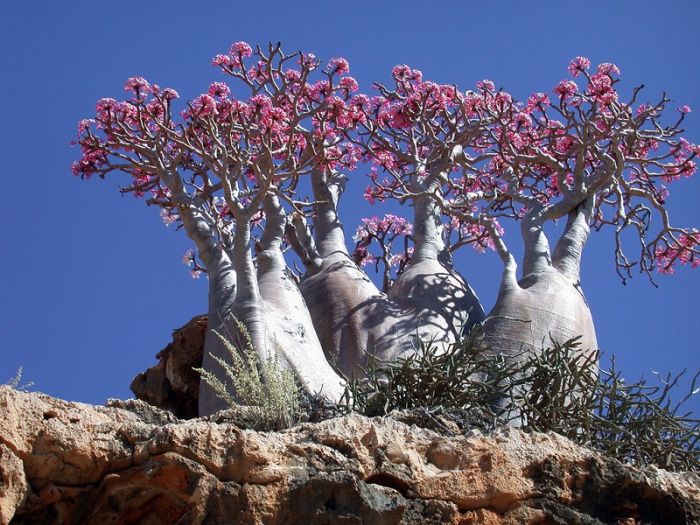|
|
Socotra Archipelago, Republic Of Yemen, Indian Ocean
|
One of the most striking of Socotra's plants is the dragon's blood tree (Dracaena cinnabari), which is a strange-looking, umbrella-shaped tree. Its red sap was thought to be the dragon's blood of the ancients, sought after as a dye, and today used as paint and varnish. Also important in ancient times were Socotra's various endemic aloes, used medicinally, and for cosmetics. Other endemic plants include the giant succulent tree Dorstenia gigas, the cucumber tree Dendrosicyos socotranus, the rare Socotran pomegranate (Punica protopunica), Aloe perryi, and Boswellia socotrana.
The island group also has a rich fauna, including several endemic species of birds, such as the Socotra Starling (Onychognathus frater), the Socotra Sunbird (Nectarinia balfouri), Socotra Bunting (Emberiza socotrana), Socotra Cisticola (Cisticola haesitatus), Socotra Sparrow (Passer insularis), Socotra Golden-winged Grosbeak (Rhynchostruthus socotranus), and a species in a monotypic genus, the Socotra Warbler (Incana incana). Many of the bird species are endangered by predation by non-native feral cats. While there are no native amphibians, the reptiles species are over 90 percent endemic to Socotra and include skinks, legless lizards, and one species of chameleon, Chamaeleo monachus.
As with many isolated island systems, bats are the only mammals native to Socotra. In contrast, the coral reefs of Socotra are diverse, with many endemic species.
Over two thousand years of human settlement on the islands have slowly but continuously changed the environment, and according to Jonathan Kingdon, "the animals and plants that remain represent a degraded fraction of what once existed". The Periplus of the Erythraean Sea says the island had crocodiles and large lizards, and the present reptilian fauna appears to be greatly reduced. Until a few centuries ago, there were rivers and wetlands on the island, greater stocks of the endemic trees, and abundant pasture. The Portuguese recorded the presence of water buffaloes in the early 17th century. Now there are only sand gullies, and many native plants only survive where there is greater moisture or protection from livestock. The remaining Socotra fauna is greatly threatened by goats and other introduced species.
|
|









